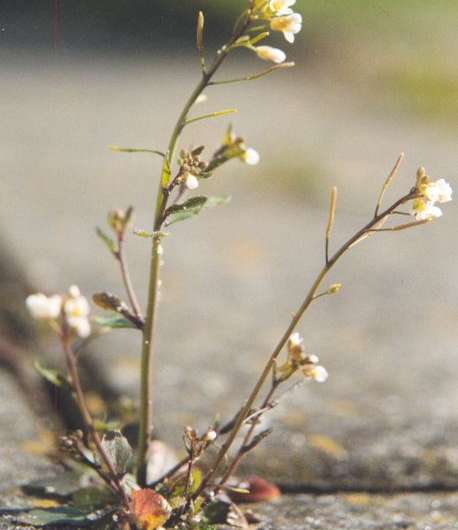New chemical tool to block endocytosis in plants identified

Plant cells absorb many important substances through a process called endocytosis. In plants, endocytosis is essential for nutrient uptake, passing on cellular signals and plant-microbe interactions. However, the vital nature of endocytosis makes it challenging to study using methods from classical genetics. Small molecules targeting this process are a good alternative for such studies but in plants, they are lacking. An international collaborative effort of scientists from several VIB Centers, Ghent University and the Free University of Berlin, coordinated by Prof. Jenny Russinova (VIB-UGent Center for Plant Systems Biology) found a new chemical that blocks endocytosis.
How to block endocytosis
Through chemical genetics, scientists previously identified the small molecule ES9 that inhibits endocytosis in plants (Arabidopsis) and fruit flies (Drosophila). Unfortunately, this compound causes the inside of cells to turn acidic. This blocks the process of endocytosis entirely, which is of little use for specific investigations. However, there were clues that ES9 might bind the cellular machinery needed for endocytosis. Now, an international team of scientist led by Prof. Jenny Russinova (VIB-UGent) discovered that ES9 binds to clathrin, a protein that plays a major role in the formation of coated vesicles, small 'organs' in cells. Further in vitro binding studies and X-ray crystallography confirmed this interaction.
Helped by the chemistry expertise of Dr. Johan Winne's team (Ghent University), the ES9 was modified and transformed into a new ES9-17 analog that retained the clathrin-binding ability but no longer acidified the cell's inside.
International teamwork leads to new discoveries
Prof. Jenny Russinova (VIB-UGent) stresses the collaborative nature of the investigation: "This project brought together scientists with different expertise and backgrounds, such as plant cell biologists, animal cell biologists, chemists, proteomic experts and structural biologists. This study clearly shows that similar cross-disciplinary chemical genetic projects have the potential to greatly boost new discoveries in biology."
Prof. Jenny Russinova (VIB-UGent) goes on to highlight the importance of their findings: "Identification of ES9-17 presents several new opportunities in the quest to understand clathrin-mediated trafficking in plants. For example, ES9 and ES9-17 offer chemical scaffolds to identify chemical substances that are even more efficient at blocking clathrin function, and, consequently, endocytosis. By doing so, we would increase our understanding of vital processes in plants."
More information: Wim Dejonghe et al. Disruption of endocytosis through chemical inhibition of clathrin heavy chain function, Nature Chemical Biology (2019). DOI: 10.1038/s41589-019-0262-1
Journal information: Nature Chemical Biology
Provided by VIB (the Flanders Institute for Biotechnology)




















